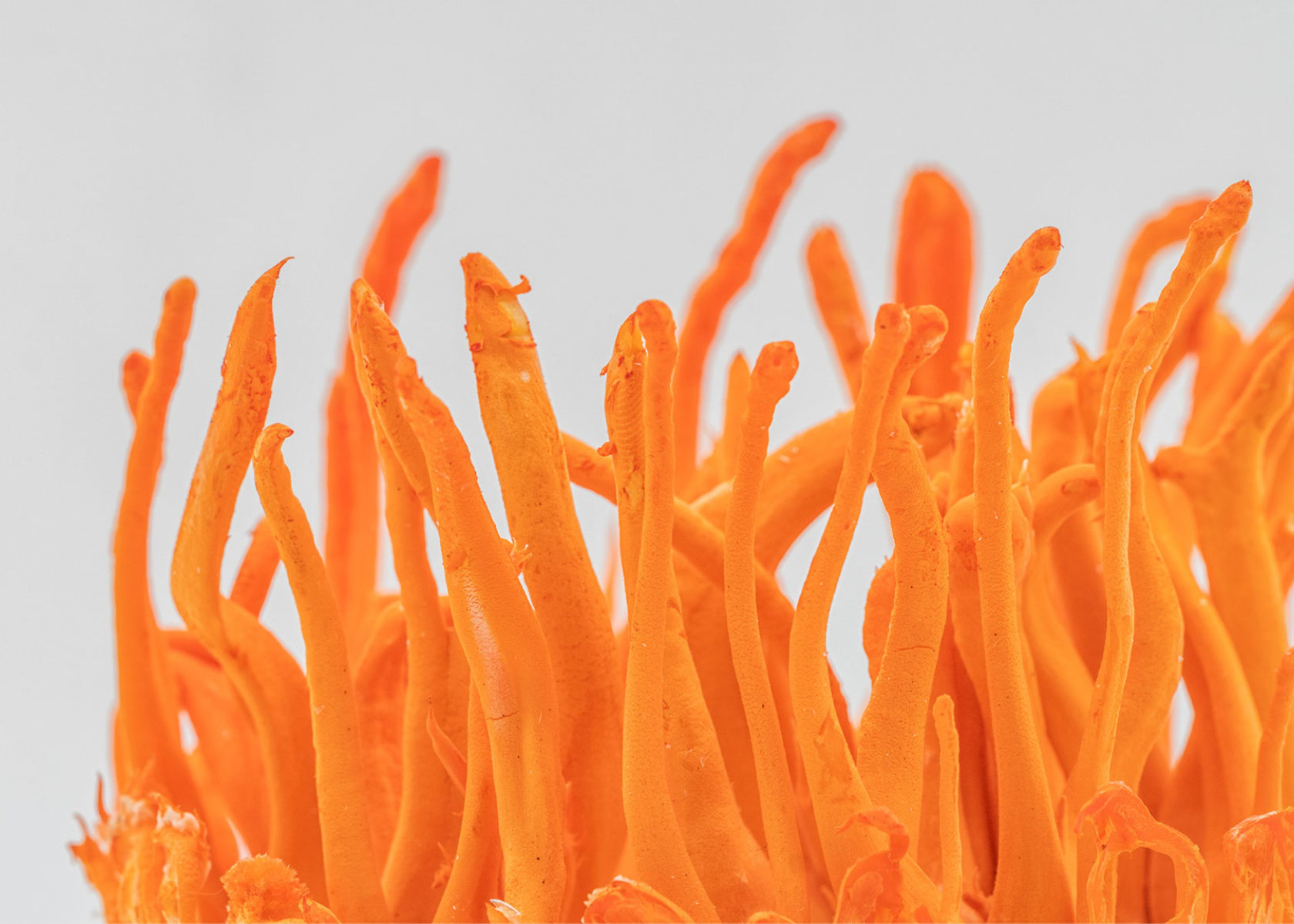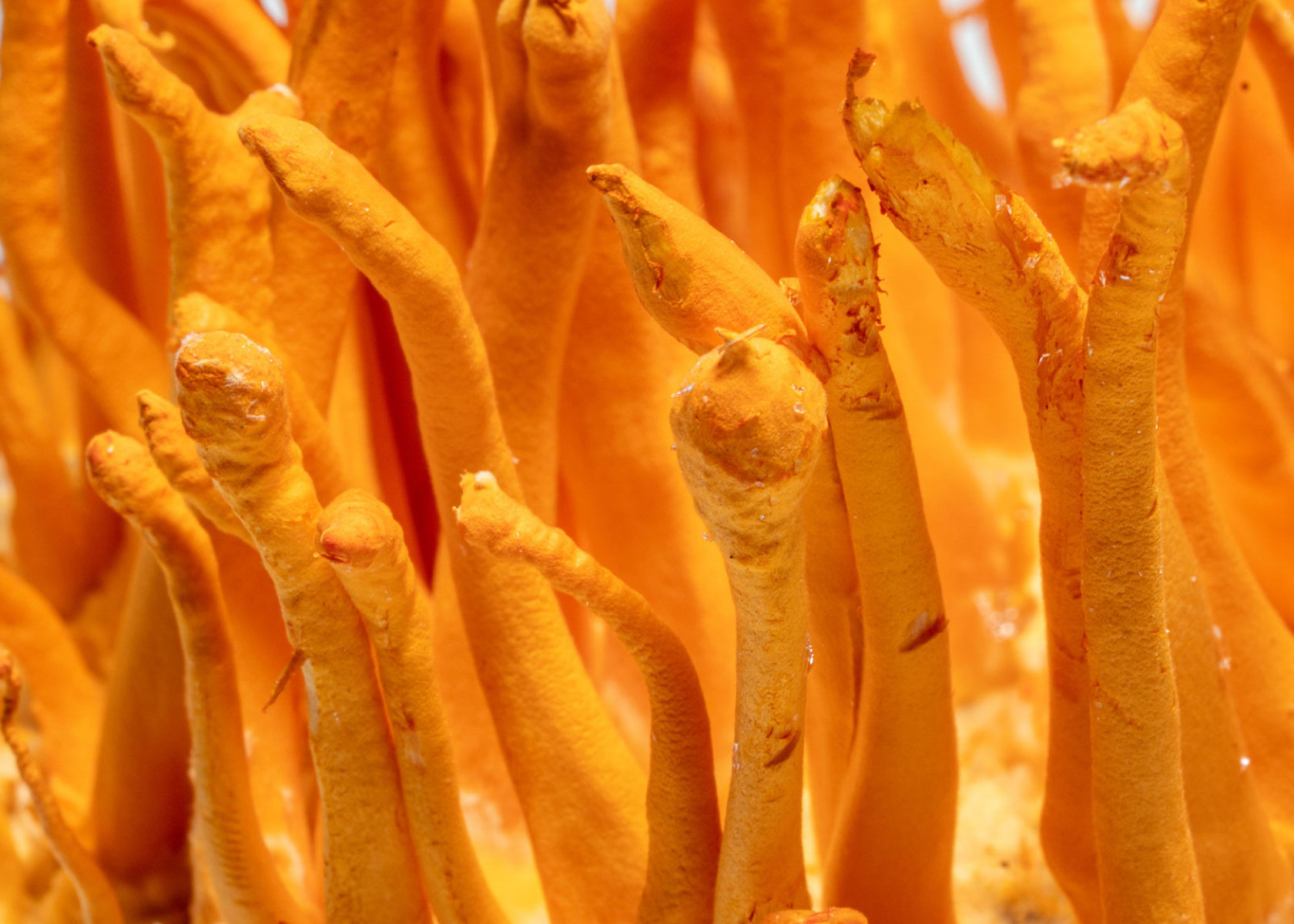
17 Dec CORDYCEPS: THE ANCIENT REMEDY
In the vast world of natural remedies, few have captured the attention of both ancient healers and modern scientists quite like Cordyceps mushrooms. Once a closely guarded secret of traditional Tibetan and Chinese medicine, these unique fungi are now making waves in the wellness community for their remarkable health benefits. But what exactly are Cordyceps, and how did they evolve from a mysterious Himalayan remedy to a staple of contemporary health practices?
A Storied Legacy of Healing
Cordyceps mushrooms, specifically Cordyceps sinensis and Cordyceps militaris, have a history that dates back over 1,500 years. Traditionally found in the high-altitude regions of the Himalayas, these fungi have long been prized for their ability to enhance stamina, boost vitality, and improve overall health. In Tibetan and Chinese medicine, Cordyceps were often reserved for the royal family and the elite, believed to imbue those who consumed them with extraordinary energy and longevity.
The story of Cordyceps begins with local herders in Tibet who noticed that their yaks became unusually strong and energetic after grazing on the mushrooms. This observation sparked interest among traditional healers, leading to the inclusion of Cordyceps in various medicinal formulations. Over time, Cordyceps became a revered tonic, used to treat everything from respiratory disorders to fatigue and even sexual dysfunction.
The Science Behind Cordyceps’ Potent Benefits
In the last few decades, Cordyceps mushrooms have transitioned from traditional medicine to mainstream health and wellness, with a growing body of research supporting their benefits. These mushrooms are rich in bioactive compounds like cordycepin, adenosine, and polysaccharides, which are believed to contribute to their wide-ranging health effects.
Energy and Endurance: Cordyceps are perhaps best known for their ability to enhance physical performance. A study published in the Journal of Alternative and Complementary Medicine found that Cordyceps supplementation significantly improved exercise performance in older adults, likely due to increased ATP production, which fuels muscle activity.
Immune System Support: Cordyceps also possess potent immunomodulatory properties. Research published in the Journal of Ethnopharmacology indicates that Cordyceps can enhance the immune system’s response to infections, making it a valuable ally in maintaining overall health and resilience.
Anti-Aging Effects: The potential anti-aging benefits of Cordyceps are another area of interest. A study in Oxidative Medicine and Cellular Longevity found that Cordyceps possess strong antioxidant properties, which help combat oxidative stress—a key factor in aging and many chronic diseases.
Respiratory Health: Traditionally used to treat respiratory conditions, modern research supports Cordyceps’ role in improving lung function. A study published in the American Journal of Chinese Medicine showed that Cordyceps supplementation improved lung capacity and reduced symptoms in patients with chronic obstructive pulmonary disease (COPD).
Sexual Health and Vitality: In traditional Chinese medicine, Cordyceps were often used as an aphrodisiac. Modern research has provided some support for this, with studies indicating that Cordyceps may improve sexual function and libido in both men and women by increasing testosterone levels and blood flow.
Navigating the Modern Marketplace
As Cordyceps mushrooms have grown in popularity, they have become a common ingredient in a variety of health products, including supplements, teas, and even energy bars. However, like all natural remedies, the quality of Cordyceps products can vary significantly.
When choosing Cordyceps supplements, it’s essential to consider the source and method of cultivation. Wild-harvested Cordyceps sinensis are rare and expensive, often leading to the use of cultivated Cordyceps militaris in commercial products. While both species have beneficial properties, Cordyceps militaris is more widely available and generally considered more sustainable.
Additionally, it’s crucial to look for products that are third-party tested for purity and potency, as the supplement industry is not always strictly regulated. Opting for organic, high-quality supplements can ensure that you’re getting the full range of benefits that Cordyceps have to offer.
Conclusion: Bridging Tradition and Modernity
The journey of Cordyceps mushrooms from ancient Tibetan pastures to modern health stores is a testament to their enduring value as a natural remedy. As scientific research continues to uncover the many ways Cordyceps can enhance our health, they stand as a powerful example of how traditional wisdom can inform and enrich contemporary wellness practices.
References
- Holliday, J. C., and Cleaver, M. P. (2008). “On the Trail of the Yak: Ancient Uses of Cordyceps Mushrooms.” Journal of Chinese Medicine, 88, 45-52.
- Chen, S., Zhang, Q., Zhang, J., et al. (2010). “Effects of Cordyceps on Exercise Performance in Healthy Older Adults: A Double-Blind, Placebo-Controlled Trial.” Journal of Alternative and Complementary Medicine, 16(5), 585-590.
- Yue, K., Ye, M., Zhou, Z., et al. (2013). “The Immunomodulatory and Anti-inflammatory Effects of Cordyceps Mushrooms.” Journal of Ethnopharmacology, 150(2), 545-553.
- Li, S., Yu, Y., and Shen, L. (2017). “Antioxidant and Anti-aging Properties of Cordyceps Mushrooms.” Oxidative Medicine and Cellular Longevity, 2017, 1-10.
- Leung, R., and Fung, Y. (2018). “Cordyceps and Respiratory Health: A Modern Perspective.” American Journal of Chinese Medicine, 46(2), 267-285.



